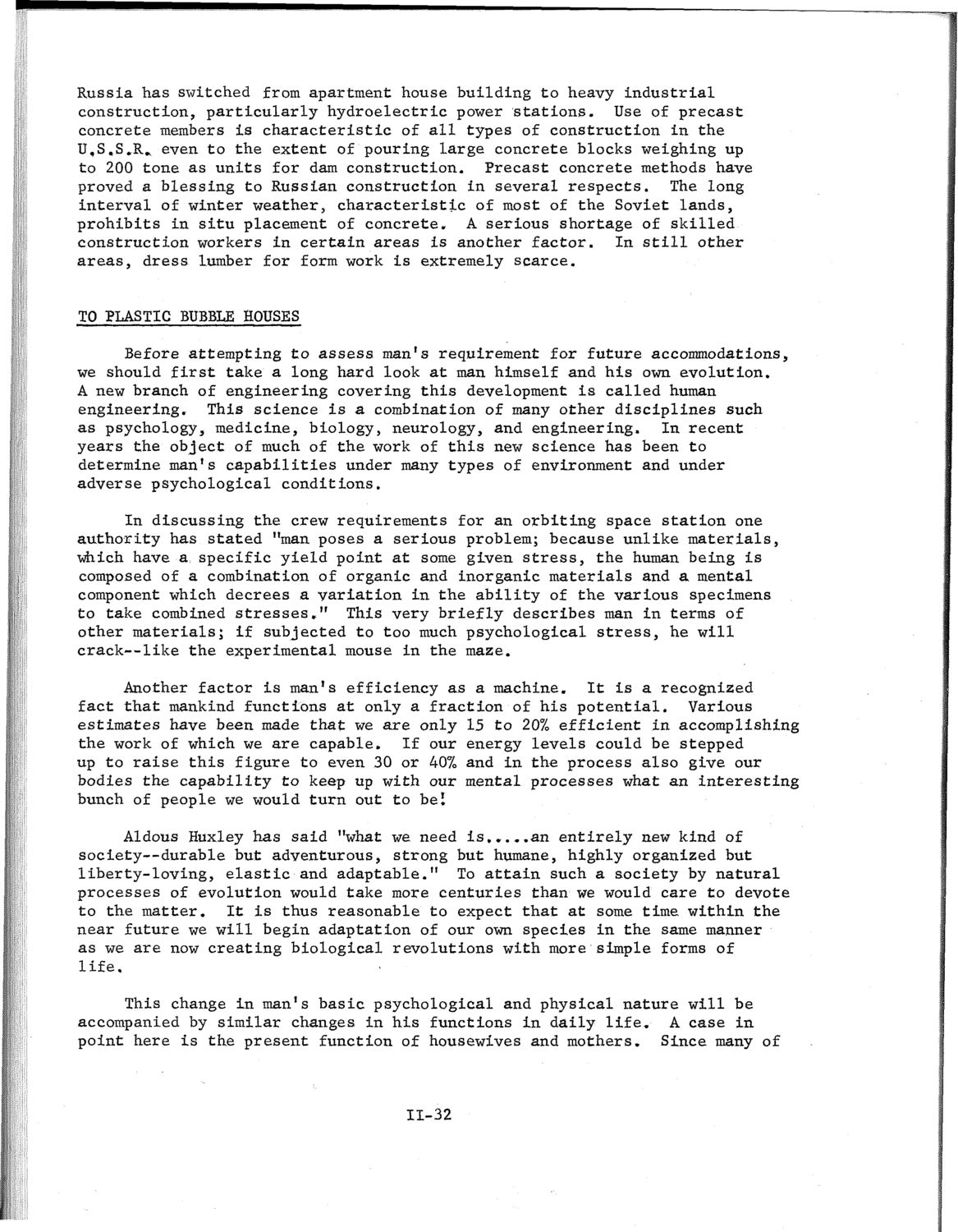| |
| |
Caption: SWE - Proceedings of the First International Conference of Women Engineers and Scientists
This is a reduced-resolution page image for fast online browsing.

EXTRACTED TEXT FROM PAGE:
Russia has switched from apartment house building to heavy industrial construction, particularly hydroelectric power stations. Use of precast concrete members is characteristic of all types of construction in the U,S,S„R.k even to the extent of pouring large concrete blocks weighing up to 200 tone as units for dam construction. Precast concrete methods have proved a blessing to Russian construction in several respects. The long interval of winter weather, characteristic of most of the Soviet lands, prohibits in situ placement of concrete. A serious shortage of skilled construction workers in certain areas is another factor. In still other areas, dress lumber for form work is extremely scarce. TO PLASTIC BUBBLE HOUSES Before attempting to assess man's requirement for future accommodations, we should first take a long hard look at man himself and his own evolution. A new branch of engineering covering this development is called human engineering. This science is a combination of many other disciplines such as psychology, medicine, biology, neurology, and engineering. In recent years the object of much of the work of this new science has been to determine man's capabilities under many types of environment and under adverse psychological conditions. In discussing the crew requirements for an orbiting space station one authority has stated "man poses a serious problem; because unlike materials, which have a, specific yield point at some given stress, the human being is composed of a combination of organic and inorganic materials and a mental component which decrees a variation in the ability of the various specimens to take combined stresses." This very briefly describes man in terms of other materialsj if subjected to too much psychological stress, he will crack—like the experimental mouse in the maze. Another factor is man's efficiency as a machine. It is a recognized fact that mankind functions at only a fraction of his potential. Various estimates have been made that we are only 15 to 207» efficient in accomplishing the work of which we are capable. If our energy levels could be stepped up to raise this figure to even 30 or 407« and in the process also give our bodies the capability to keep up with our mental processes what an Interesting bunch of people we would turn out to be I Aldous Huxley has said "what we need is.....an entirely new kind of society—durable but adventurous, strong but humane, highly organized but liberty-loving, elastic and adaptable." To attain such a society by natural processes of evolution would take more centuries than we would care to devote to the matter. It is thus reasonable to expect that at some time within the near future we will begin adaptation of our own species in the same manner as we are now creating biological revolutions with more simple forms of life. This change in man's basic psychological and physical nature will be accompanied by similar changes In his functions in daily life. A case in point here is the present function of housewives and mothers. Since many of 11-32
| |